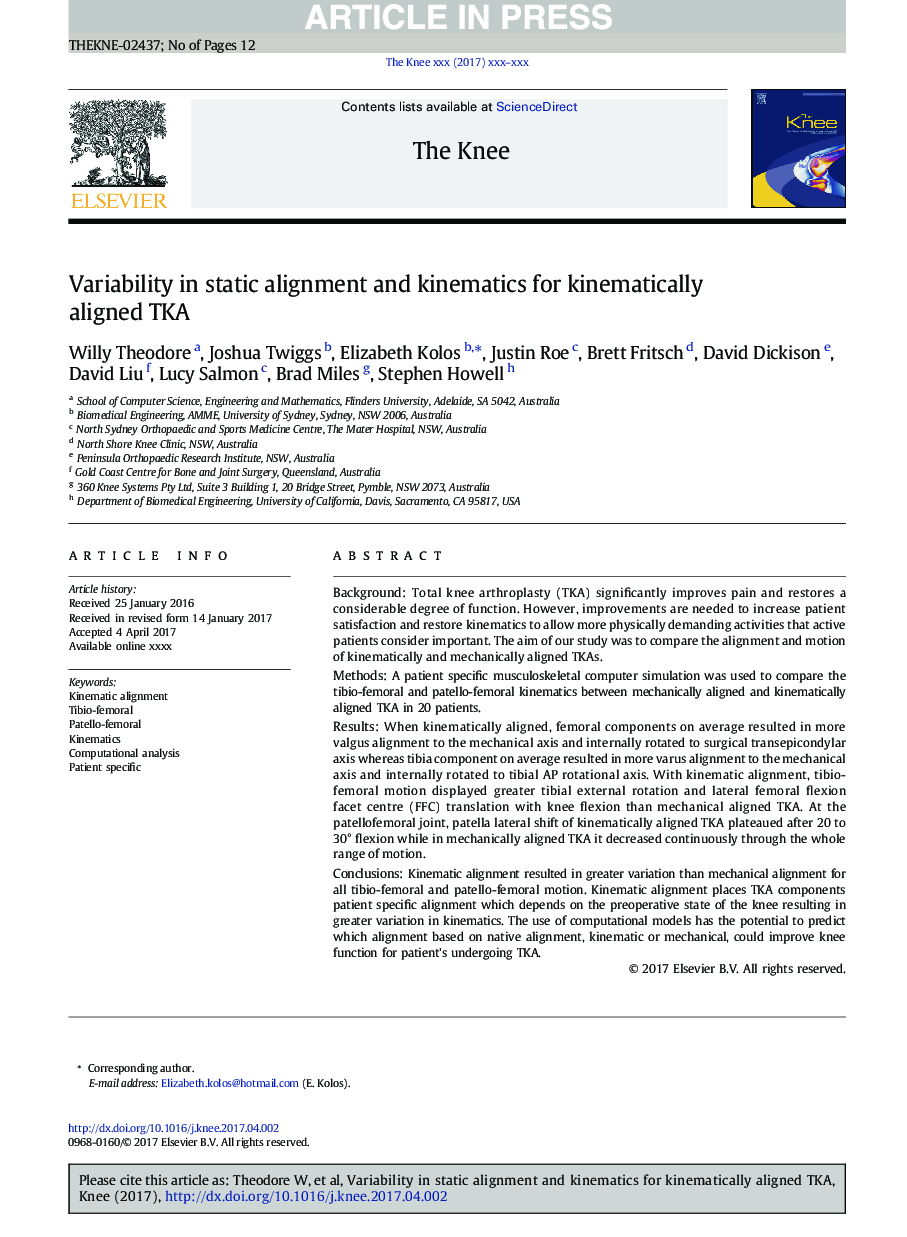| Article ID | Journal | Published Year | Pages | File Type |
|---|---|---|---|---|
| 5710730 | The Knee | 2017 | 12 Pages |
Abstract
Kinematic alignment resulted in greater variation than mechanical alignment for all tibio-femoral and patello-femoral motion. Kinematic alignment places TKA components patient specific alignment which depends on the preoperative state of the knee resulting in greater variation in kinematics. The use of computational models has the potential to predict which alignment based on native alignment, kinematic or mechanical, could improve knee function for patient's undergoing TKA.
Related Topics
Health Sciences
Medicine and Dentistry
Orthopedics, Sports Medicine and Rehabilitation
Authors
Willy Theodore, Joshua Twiggs, Elizabeth Kolos, Justin Roe, Brett Fritsch, David Dickison, David Liu, Lucy Salmon, Brad Miles, Stephen Howell,
